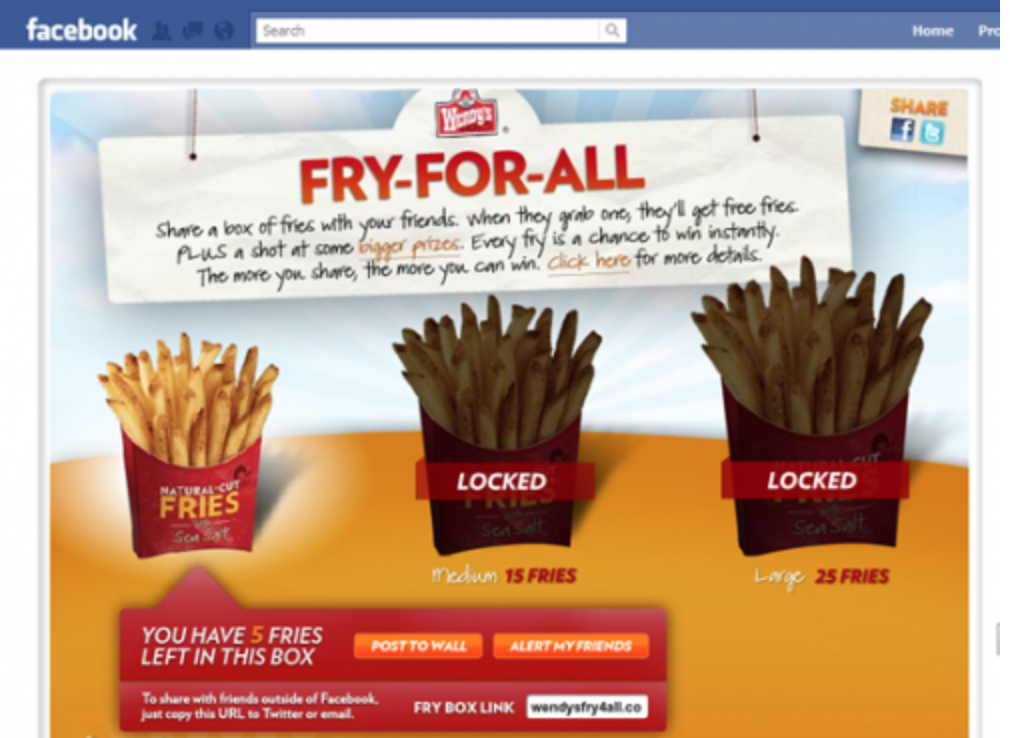Put down your consoles. Gamification is no child’s play.
Gamification is no new concept, folks. In fact, this marketing concept has been around for quite a while now. Marketers have been constantly searching for a method to cultivate loyalty among their customers, while effectively strengthening customer buying behaviour and engagement.
.
The solution? Gamification. It seeks to incorporate different elements of game mechanics into existing non-game contexts to encourage customer engagement, improve customer retention and, strengthen customer loyalty.
.
A brief history of gamification
1896
S&H sold stamps to retailers who used them to reward loyal customers.

1980s
Gamification started to become prevalent via tactics such as frequent flyer miles, hotel loyalty programs, free prizes in cereal boxes and the controversial McDonalds Monopoly game.

2002
Nick Pelling coins the word gamification. He originally defined the term as, “Applying game-like accelerated user interface design to make electronic transactions both enjoyable and fast.”
2007
Remember Dunder Mifflin from The Office? Well, Bunchball partnered up with NBC to create the gamified website, Dunder Mifflin Infinity. Gamification increased viral awareness and user-generated content as well as widen fan base for The Office. The website received over 8 million page views in six weeks.
https://giphy.com/gifs/9jX2XmUjDajsI/html5
2009
Foursquare integrated gamification into its social platform by allowing users to collect badges and other achievements. For example, a person who frequently checks into a similar location more than anyone else within a 60 day period will be deemed the ‘Mayor’ of that location.
.
What fueled gamification into popularity?
Because gamification has proven effective in retaining customers. From badges to leaderboards to check-ins to points, rewards, challenges, and levels. By offering incentives and rewards at every touch point of the customer’s journey, gamification inevitably boosts customer engagement and loyalty.
.
In this article, we will look at three different brands and their gamification examples and how we can tap into this plethora of marketing gold to increase customer engagement, retention and loyalty.
Let’s delve deeper, shall we?
.
STARBUCKS
Let’s use Starbucks to amplify one of a crucial aspect of gamification: Loyalty Programs. Gamified loyalty programs can come in the form of frequent flyer cards, loyalty cards, punch or stamp cards and coupons.
For Starbucks, a typical loyalty card goes through the process of action (the purchase) and reward (discount, freebies). Gamification, however, heightens this pretty simple process by adding value through fun, interactive features that provide an exhilarating experience for its users.


The Starbucks Rewards program is an example of gamification that includes simple, easy challenges that provide the users with measurable rewards. These challenges revolves around a tiered membership that customers can work their way up based on points earned. The higher the tier, the better the benefits.
.
By adding challenges to their loyalty programs, users are presented with a sense of accomplishment when they actually reach their goal. The loyalty program capitalizes the idea of scoring points and challenges customers to conquer the next level. Like Starbucks Rewards program, gamification should essentially produce games that are easy to play and winnable. This is because the main purpose of implementing games is to keep your existing customers engaged and reactivate lapsed ones.
.
Since humans are naturally inclined to desires such as achievement and status, this gamification element is great way to increase customer engagement via the app. However, tiers are only effective if the highest tier is reserved for the most loyal and profitable customer to still implement a sense of desire and competition. Displayed rankings showing the current status of your membership (Welcome, Green, & Gold) subtly encourages users to obtain more stars then they usually would.
.
AIRLINE MILES
Gamification is also predominantly found in airlines where gamified challenges are created to cater for their passengers, where they are rewarded with free flights and better seats. These challenges are a breath of fresh air from the regular passenger upgrades that are based on their frequent flyer status.
.
Qantas Airline shows us another way of how brands can gamify rewards to improve customer engagement and experience. This gamification example can be seen via their Qantas Frequent Flyer that rewards its customers with airline miles with a catch. Customers will only be able to collect their frequent flyer points once they’ve completed the fitness target they’ve inputted in the app.
.
Wait, what?
.
Yes, Qantas’ customers are required to exercise before earning their rewards! The fitness target that they need to complete ultimately depends on each customer’s’ individual lifestyle. However, the bigger the size of their fitness target, the more points they get to earn. Their progress is monitored via the app and each target completion will be rewarded with Qantas Points that can be used on flights, upgrades, and hotels.
.
They say if you want something, you’ve got to work for it. Well, literally.

.
Another airline that uses elements of gamification is Delta. Delta started a competition that required players to search for giant balls of fluff (clouds) while they are up in an airplane during flight. Users are required to find a cloud that resembles an item or a picture and enter its identification into an app. Each entry procures the user with a credit, added into their loyalty program. It’s simple to play, it’s fun and it’s interactive. Not only does it increase consumer engagement but it also creates a sense of excitement that makes customers come back for more. Delta cleverly coined the competition as “Search For The Most Bored Passenger” to make this game fun and endearing for these idle passengers.
.
GRAB SG
Grab SG recently rolled out their revamped mobile app which included a couple of different gamified segments such as an interactive ‘Poll’ segment, a ‘Games For You’ segment, and a ‘ Personality Quiz’ segment.


These segments are meant to retrieve data and information about Grab’s customers allowing them to customize and personalise each consumer journey according to their own individual preferences. It is also a way for Grab to increase the retention time of the customers using their app.
.
With this newly revamped gamified app, customer engagement is magnified as Grab kicks off its effort to serve passengers with smarter and more personalized services, based on insights into their needs, intentions, and preferences.
.
Grab Rewards offers loyalty points in increment as their customers spend more and more money on their services. More money spent = more loyalty points collected. What makes this exciting is how Grab offers a wide variety of rewards from food & beverage to shopping to other services like beauty and telecommunication services to travel and entertainment. This helps to dismiss any feeling of ‘wasted money’ because their accumulated expenditure will grow into points that allow customers to reap the rewards later on. Sneaky.
https://giphy.com/gifs/HHJ4LDSfbpxa8/html5
.
Customer retention will further flourish if the brand is able to identify and personalize the type of rewards that each customer is actually looking for. So that customers will have more reasons to stay.
.
Furthermore, humans have the natural tendency to compete and achieve. So by implementing a multi-tiered loyalty point system (Platinum, Gold, Silver, and Bronze), it allows Grab’s customers to strive and achieve the highest tier. The higher you climb the tier, the more benefits, and rewards you will be able to reap.

Image Credit: Grab
.
Turn Grab Rewards into Air Miles
Grab has partnered with Singapore Airlines to give members of Grab’s loyalty program the opportunity to convert GrabRewards points into air miles with KrisFlyer. This allowed GrabRewards members to use GrabRewards points to purchase discounted flight tickets or seat upgrades with SIA.
.
Singapore Airlines passengers who are going to catch their flight will also be able to book a Grab ride to the airport through ‘SingaporeAir’ mobile app. The first 5,000 customers to book a Grab ride via SingaporeAir will receive GrabPay credits.
.
Grab has turned to gamified loyalty schemes to retain customers using GrabRewards benefits such as special offers and discounts with travel, F&B, lifestyle, and retail brands.

.
Other notable case studies
.
Wendy’s: Find out how Wendy’s got social high-fives and sold more fries.

.
There are countless gamification examples out there besides the ones that have been mentioned above. Be it a simple loyalty program via stamp cards or a more optimized loyalty program like Starbucks Rewards, your brand should decide on the elements that works and resonates best for you. Start by finding your brand’s weakest-performing marketing efforts and incorporate game elements such as above into them. Good luck.
.
Seriously considering how to break from the norm and embrace gamification? Reach out to us at hello@alto.sg for a free consultation. We’ll be glad to help you out. [/et_pb_text][/et_pb_column][/et_pb_row][/et_pb_section]


